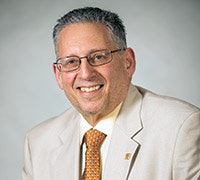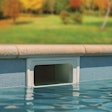
Sometimes the old adage is true: To know where you’re going, it helps to know where you’ve been. I can’t think of a better example than the Association of Pool and Spa Professionals.
I’ve served on the association’s board of directors for the past six years, and for the past year, I’ve enjoyed the honor of serving as chairman. It’s been a fascinating, rewarding and sometimes frustrating ride, but an experience that has given me a rich understanding of APSP’s past, present and most important, its future. I believe that today, APSP finds itself at a turning point and is poised to lead our industry into a new era defined largely by an up-and-coming generation of forward-thinking professionals.
Before we go down that path, it’s helpful to take a quick look back at the association’s history and some of the peaks and valleys that have led us to where we are today.
STORIED PAST
APSP, once long known as the National Swimming Pool Institute, got its start about 57 years ago when a group of industry business leaders from the nation’s heartland came together. At first, they met to simply commiserate about common challenges they faced, yet they quickly realized they could work together for everyone’s mutual benefit — to sell more pools, to better service and repair pools and to advocate the industry’s interests in governmental affairs. This was also the birthplace of industry-wide building and construction standards.
They also realized that they actually liked each other. That was a huge revelation, because back in those days this was a highly competitive if not cutthroat industry. From those meetings came the first incarnation of NSPI.
Around the same time, a similar group came together in the Northeast and formed the Northeast Spa and Pool Association. There’s been a lot of debate about which came first, and there’s been a sort of friendly competition between the two; sort of a Willie Mays versus Mickey Mantle debate. None of that really matters much, but what is important is that the two organizations share common objectives, core values and have worked together to benefit their members and the industry.
Fast-forward to about 12 years ago: NSPI hit some extremely tough times courtesy of a slew of nearly catastrophic and, I would argue, frivolous lawsuits. As it played out, the association was saddled with crushing financial obligations. Under duress, they sold the national show to publishing and tradeshow giant Hanley Wood and went into bankruptcy — not once, but twice — to protect the remaining assets. One of the consequences of those actions was that NSPI reorganized under a new name, APSP.
That was a dark time. It must have been very difficult to have been a volunteer back then. These were good people with the best intentions serving at a difficult time in our evolution. All the goodwill associated with the old acronym was lost, membership declined and the board of directors at the time was left to simply follow the edicts of legal counsel. There were a great many people who believed the association’s days were numbered, and some were highly critical of APSP’s lack of leadership.
Unsurprisingly, APSP’s leadership and staff circled the wagons and assumed a largely defensive stance. There was ample money in reserves from the sale of the show; however, we lost our annual revenue from the show. Yet there was some good news for the industry, as the white hot real estate market drove demand for pools and spas as part of an overall explosion in consumer spending on home improvements.
Unfortunately, APSP’s financial concerns and protective posture resulted in a disconnection with the industry it was meant to serve. During that time, industry leadership largely fell to other groups, including NESPA, the National Swimming Pool Foundation, the Florida Spa and Pool Association, the Independent Pool & Spa Service Association, the National Plasterers Council, APEC, SPEC and Genesis 3, as well as groups such as Carecraft, the Masters Pool Guild and Aquatech, now known as United Aqua Group.
While the work those groups accomplished remain critical to this day, APSP is better positioned to represent all local and regional markets in the national arena. For all of APSP’s past challenges and the great work done by our other industry organizations, a national association is essential to provide leadership, advocacy, standards/professionalism and promote the overall industry’s common interest.
Frankly, I believe the very fact that APSP survived those challenging times should be viewed as a badge of honor. I have the utmost respect for all the volunteers of that era who so passionately worked under stressful circumstances to keep the ship afloat. If you look at the history of other trade associations, they are very similar to APSP’s in that many have endured similar challenges. Many, however, did not survive, whereas APSP has, and that by itself is a significant accomplishment. When you stare adversity in the face, you always come out the other end stronger for it.
During the recession and current slow recovery of the past five years, we’ve seen a renaissance in leadership and volunteer service in APSP. I give a great deal of credit to Bill Weber, the outgoing president/CEO of APSP, for his vision, for stabilizing the association’s financial troubles and for investing reserves in APSP’s professional staff and infrastructure. It’s all the more impressive that APSP held its ground during a time when most of our industry segments were brutalized in the wake of 2008.
As Weber’s replacement, Richard Gottwald, steps in, APSP finds itself poised to once again be a dynamic trade association, one with a fresh direction that both honors its storied past and also responds to the demands and opportunities in today’s market.
I view APSP as an essential partner to those “smart adapters” who not only weathered the economy, but thrived in it.
THE NEW GUARD
There are a number of big reasons driving my own optimism and passion. The first boils down to leadership emerging among APSP’s membership. Through my work on the board, I’ve seen a new generation of aspiring leaders raise their hands and begin to assert their ideas. People are jumping on the bandwagon wanting to get engaged — and their energy is infectious.
These young leaders truly have a voice of their own, so much so that APSP has created a new group called the APSP Wave. It’s comprised of young professionals from all segments of our membership, including those in manufacturing as well as new company owners and second-generation owners looking to expand or redefine their family’s company. These are young people with fresh ideas who want to have an immediate impact.
Yet the Wave is just one part of the APSP’s transformation.
The board has grown over time, swelling to 24 seats in recent years. Through my years on the board, and especially during this past year as chairman, I’ve learned just how difficult it is to get things done with a group that size. Simply arranging a conference call with that many different schedules is a huge challenge. When it comes to implementing ideas, the number of cooks in the kitchen has made those processes frustratingly slow, if not impossible in some instances.
That’s changing in a big way this year. When I hand over the chairmanship to April Nielson on November 11, she’ll be taking over a board that will have only nine seats.
In the past, people have been critical of APSP for not being representative of the industry’s leadership. That’s going to change. For example, we now have a seat for mid-channel companies, either a distributor or buying group. There’s also seats reserved for a director from a major manufacturer and a director from outside the industry. On the other hand, there will no longer be a seat for the past chairman and there will no longer be an executive committee. Eliminating the executive committee means the board will act as a committee of the whole. The new structure will improve communication and facilitate greater transparency, trust, accountability and credibility.
THE VIEW AHEAD
For my part, it’s been an honor and a privilege to play even a small role in these important changes. When you combine the fact that we’re experiencing an improved economic landscape, a new leader of APSP’s staff, the advent of the Wave, the reduced size and revamped structure of the board and the new term limits, there’s every good reason to be optimistic.
I encourage everyone in the industry to look at APSP through fresh eyes. This is not your grandfather’s association. We are relevant and we provide the tools to help you and your business grow.
Comments or thoughts on this article? Please e-mail [email protected].











































